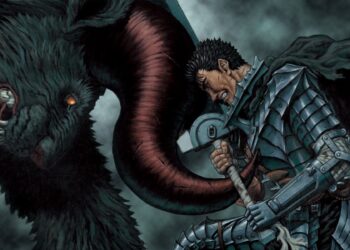Delving into the Pixelated Past: Unpacking the Legacy and Costs of the Nintendo Game Boy
The Nintendo Game Boy. That chunky grey brick sparked a handheld gaming revolution. Before smartphones, before tablets, there was the Game Boy. It wasn’t sleek, it wasn’t color at first, but it had charm. Let’s explore the history, the games, and the cash involved with this iconic handheld.
The Genesis of Game Boy: Birth and Original Price
Picture this: 1989. Big hair was trendy, shoulder pads were everywhere, and Nintendo released the Game Boy. Japan got it first on April 21, 1989. North America waited longer, while Europe had to wait until late 1990. The cost? US$89.99. In today’s money, it’s around $230. Many considered it a steal for gaming on the go.
Game Boy Color: A Splash of Hue and a Slightly Lower Price Tag
Fast forward to 1998. The world wanted color, and Nintendo delivered. Enter Game Boy Color. Released in Japan in October 1998, it offered a vibrant reboot. Suddenly, Pokémon were colorful blobs. It launched at US$79.95. Maybe Nintendo thought color was worth less than monochrome? Gamers rejoiced at the lighter dent in their wallets.
Game Boy Advance SP: Folding Fun and a Slightly Higher Initial Cost
Then came the Game Boy Advance SP. It sported a sleek clamshell design that was popular in the early 2000s. The SP had a price of US$99.99. It was compact when closed, protected the screen, and featured a front-lit screen, great for dimly lit rides or late-night plays. The SP showed Nintendo’s knack for innovation.
The Sunset of an Era: Game Boy’s Discontinuation
All good things must end, even gaming legends. In 2008, Nintendo bade farewell to the Game Boy line. This included the original, Color, and Advance. The reason? The Nintendo DS was the new handheld, offering something fresh. It was bittersweet. The Game Boy had left a huge impact on portable gaming but had to step aside.
Game Boy Games: From Launch Titles to Legendary Rarity
A console shines through its games. The Game Boy library was phenomenal. From classics to hidden gems, let’s explore the cartridges that defined a generation.
The OG Lineup: Launch Titles That Started It All
The Game Boy launched in Japan with four titles: Super Mario Land, Alleyway, Baseball, and Yakuman. North American gamers saw Tetris and Tennis at launch instead. Notably, Yakuman stayed Japan-exclusive due to its niche appeal. Tetris became linked with the Game Boy, bundled in many regions and helping its early success.
The Last Hurrah: Final Games for a Beloved System
Even as the Game Boy neared its end, games trickled out, mostly in Japan. The last official titles were Japan-only educational games Shikakui Atama o Maruku Suru: Kanji no Tatsujin and Shikakui Atama o Maruku Suru: Keisan no Tatsujin, both released on March 30, 2001. These marked a quiet end to software releases for the Game Boy.
Rarity Personified: The Quest for the Most Elusive Game Boy Cartridge
For collectors, the hunt for rare games is endless. One title stands out: Amazing Tater. This puzzle game holds legendary status among collectors due to its limited production and high value. It may not be well-known but is a prized possession in the retro gaming market.
Chart-Toppers and Bestsellers: Games That Conquered the Sales Charts
Tetris remains the best-selling game on the Game Boy Color, originally a Game Boy title. For games made for the Color, Pokémon reigns supreme. Pokémon Gold and Silver captivated millions. For Color exclusives, Pokémon Crystal stands tall, further proving Pokémon’s dominance on handhelds.
Unearthing Hidden Treasures: Rare and Valuable Game Boy Color Games
The Game Boy Color boasts rare games, coveted by collectors for their allure. Titles like Tetris DX Not For Resale reach prices over $349. Other gems include Legend Of The River King 2, Bomberman Quest, and Survival Kids, fetching around $350-$450. Pokémon Crystal can reach about $549 in rare versions. For big spenders, Wendy: Every Witch Way and Resident Evil Gaiden soar to $551 and $700, respectively.
A Library of Hundreds: The Sheer Volume of Game Boy Color Games
The Game Boy Color had quantity as well as quality. From 1998 to 2003, it accumulated 915 licensed releases. That’s a staggering number of cartridges to collect. It speaks to the system’s popularity and the creativity of developers back then. Completing that library would take ages.
The Apex of Price: The Most Expensive Game Boy Game of Them All
We’ve highlighted rare games but let’s revisit the top price holder: Amazing Tater. Its sequel is even rarer and holds the title of the most expensive Game Boy game. Prices fluctuate but owning a copy will cost a lot. For collectors, bragging rights may justify the expense.
Nintendo’s Game Boy Goldmine: Profitability and Success
The Game Boy was a financial powerhouse for Nintendo. In Q1 2003, Nintendo reported $95 million in profit, driven by strong Game Boy sales. This total highlights the immense profitability of the handheld console, aiding Nintendo’s financial health during its lifespan.
Battling for Handheld Supremacy:
Game Boy’s Competitors
The Game Boy faced competition in the handheld market. Sega’s Game Gear stood out. It, along with the Atari Lynx and NEC’s TurboExpress, posed a challenge to the Game Boy. These competitors had better graphics and color screens. However, the Game Boy’s battery life, game library, and lower price helped it succeed. It was a case of substance over style, aided by clever marketing and a plumber named Mario.
A Price Comparison: Game Boy and Its Console Contemporaries
To appreciate the Game Boy’s pricing, we must see it in relation to other consoles. Let’s journey through console history and look at various launch prices.
Throwback Prices: NES, SNES, and N64
Long ago, the NES launched in 1985 at $199. The SNES also launched in 1991 at the same price. The Nintendo 64 was originally priced at $250. However, it launched at $199.99 in 1996 to keep up with Sony and Sega. These prices seem high compared to the Game Boy but were for home consoles with more power.
Sony Enters the Fray: PlayStation and PlayStation 2
Sony entered the console market with the PlayStation in 1995. Priced at $299, it was cheaper than the N64. The PlayStation’s CD-ROM games and 3D graphics drew many customers. Sega reduced the Saturn’s price to match the PlayStation but failed to stop its success. The PS2 also launched at $299 in 2000, solidifying Sony’s pricing strategy. Despite the price, the PS2 became the best-selling console ever.
Nintendo’s GameCube and Wii: Mid-Range Pricing
Nintendo’s GameCube came out in 2001 at $199, similar to the N64. The Wii launched in 2006 at $249.99 in the US. With innovative motion controls and broader appeal, the Wii was a huge success for Nintendo.
PlayStation 3 and 5: High-End and Modern Pricing
The PlayStation 3 debuted in 2006 with high pricing. The 20GB model was $499, while the 60GB version reached $599. The high price and limited software led to mixed reviews. Years later, the PlayStation 5 launched in 2020. The standard model was $499.99 and the digital edition was $399.99. These prices reflect modern consoles’ complexity.
Other Throwbacks: Atari 2600 and Sega Genesis
Let’s not forget the Atari 2600. In 1980, it was priced at $189.95. Adjusted for inflation, that equals $990 in 2024! This shows how console prices have changed over time. The Sega Genesis launched in 1993 for about $120, roughly $260 today. These examples highlight how technology costs and market conditions affect console pricing.
The Cost of Play: Video Game Prices Through the Ages
Console prices tell only part of the story. What about game prices? Let’s explore how they have changed over time.
NES and N64 Game Prices: Steep Costs in Their Day
In the late 1980s, NES games cost about $49.99. Adjusted for inflation, that’s over $100 today! Playing NES games was expensive. By the late 1990s, N64 game paks sold for around $75.99, equivalent to about $150 today. Prices show how costly gaming cartridges were compared to digital downloads now.
PC Games and the Rise of the $60 Price Point
In the early 2000s, new PC games were typically around $50. By the mid-2000s, the $60 price point for console video games became standard. This price remained steady for many years, but some recent titles reached $70 or more. Inflation seems to catch up with game prices over time.
VHS Movies: A Price Point Perspective from the Past
For context, VHS movies in 1990 varied in price from $7 to $25 for pre-recorded tapes. This helps us understand spending habits of that time. Video game prices were often on the higher end compared to other media.
Extra Nuggets of Gaming Knowledge: Bestsellers and Beyond
Lastly, here are some interesting gaming trivia tidbits to broaden our view of video gaming.
The Reigning Champions: Best-Selling Consoles and Games
The PlayStation 2 is the best-selling console ever with over 160 million units sold. The Nintendo DS holds the handheld record with over 150 million units. Its innovative touchscreen and wireless gaming attracted many players. Finally, the best-selling video game overall is Tetris. With around 520 million copies sold, this classic puzzle transcends generations, showing simple gameplay can endure.
This summary captures the essence of the Nintendo Game Boy. From its humble origins and price to its huge library and lasting legacy, it was not just a handheld console. It became a cultural icon and a childhood companion. Perhaps one day, that old Game Boy will be worth more than expected.










